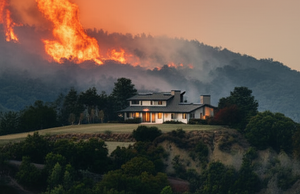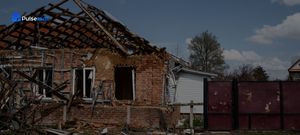Tourist Trap or Treasure? How Local Attractions Impact Neighborhood Property Appreciation
The allure of living near popular tourist attractions is undeniable. From vibrant cultural experiences to convenient access to entertainment, these areas often hold a special appeal. But how does this proximity impact property values and overall desirability? According to our analysis, cities with a blend of historical and leisure attractions, such as Mitchellville, Iowa, with its 45.18 miles to the Adel Historical Museum and 13.95 miles to the Butter Cow, may see a boost in rental income and property values. It's essential to consider how local analysis can help understand this impact.
Understanding the Tourist Attraction Effect
Living near a major tourist attraction can be a double-edged sword. On one hand, it can boost local economies, create job opportunities, and enhance the overall vibrancy of a neighborhood. On the other hand, it can lead to increased traffic, noise pollution, and higher costs of living. Understanding these dynamics is crucial for both potential homebuyers and investors, as seen in cities like White Hills, Arizona, with its 51.48 miles to the Arizona Route 66 Museum and 62.69 miles to the Big Apple Coaster.
City-Specific Analysis: A Deep Dive
Let's examine several cities and their relationship to nearby tourist attractions. We'll explore the types of attractions, their proximity to residential areas, and potential impacts on property values. For instance, Haverhill, Iowa, presents a mix of historical and cultural attractions, with the Belle Plaine Area Museum located approximately 47.67 miles from the city center and the Brunnier Art Museum about 47.28 miles away.
Mitchellville, Iowa: A Blend of History and Leisure
In Mitchellville, Iowa, a variety of attractions dot the landscape. From historical sites like the Adel Historical Museum, located approximately 45.18 miles from the city center, to unique attractions like the Butter Cow, a mere 13.95 miles away, Mitchellville offers a diverse range of experiences. The Big Creek Historical Museum is also located 25.58 miles away. Understanding how local analysis can help understand the impact of these attractions on rental income and property values.
White Hills, Arizona: Gateway to Adventure
White Hills, Arizona, boasts a landscape rich in natural and man-made attractions. The Arizona Route 66 Museum, situated about 51.48 miles from the city center, offers a glimpse into the past, while attractions like the Big Apple Coaster, approximately 62.69 miles away, provide thrilling experiences. The Boulder City-Hoover Dam Museum is located 37.23 miles away. Further property analysis could reveal the extent to which these attractions influence property values and rental rates.
Haverhill, Iowa: A Hub of Historical and Cultural Sites
Haverhill, Iowa, presents a mix of historical and cultural attractions. The Belle Plaine Area Museum, located approximately 47.67 miles from the city center, offers insights into local history, while the Brunnier Art Museum, about 47.28 miles away, showcases artistic talent. The Dumont Historical Museum is located 75.36 miles away. Understanding how analysis of local amenities can help buyers make informed decisions.
The Data Gap: What We Can't See
While we can identify the presence and proximity of tourist attractions in these cities, the lack of available real estate data (median price, homes sold, inventory, days on market) prevents us from drawing definitive conclusions about their direct impact on property values. Further research is needed to bridge this gap and provide a more comprehensive understanding.
General Trends and Considerations
Despite the data limitations, we can still consider general trends and factors that influence property values near tourist attractions:
- Type of Attraction: Major attractions like theme parks or national monuments tend to have a more significant impact than smaller, local attractions.
- Proximity: The closer a property is to an attraction, the greater the potential impact, both positive and negative.
- Seasonality: Tourist destinations often experience seasonal fluctuations in demand, which can affect rental income and property values.
- Infrastructure: Adequate infrastructure, such as transportation and parking, is crucial for supporting tourism and maintaining property values.
- Local Regulations: Zoning laws and regulations regarding short-term rentals can significantly impact the desirability of properties near tourist attractions.
Conclusion: Tourist Attraction - Treasure or Trap?
The impact of tourist attractions on neighborhood property appreciation is complex and multifaceted. While proximity to attractions can offer numerous benefits, it's essential to weigh these against potential drawbacks. By carefully considering the type of attraction, its proximity, and local market conditions, potential homebuyers and investors can make informed decisions and determine whether living near a tourist attraction is a treasure or a trap. For instance, in Nealmont, Pennsylvania, with its 37.46 miles to the American Philatelic Center, understanding how analysis can help investors identify opportunities in areas with strong tourism potential.
Future-Proofing Your Investment
In today's competitive real estate market, it's crucial to stay ahead of the curve. By leveraging data-driven insights and how analysis, you can future-proof your investment and make informed decisions about your real estate portfolio.



